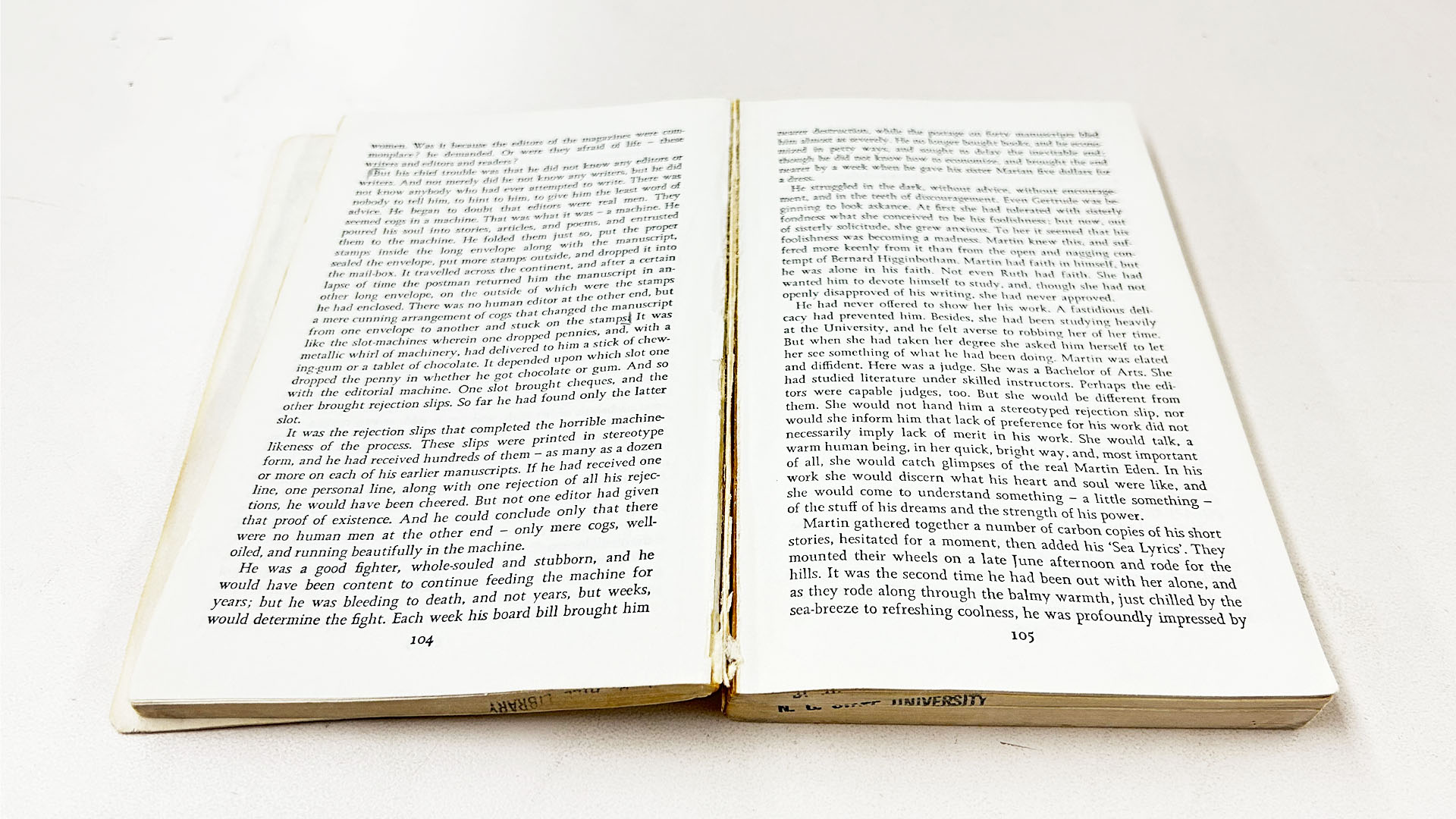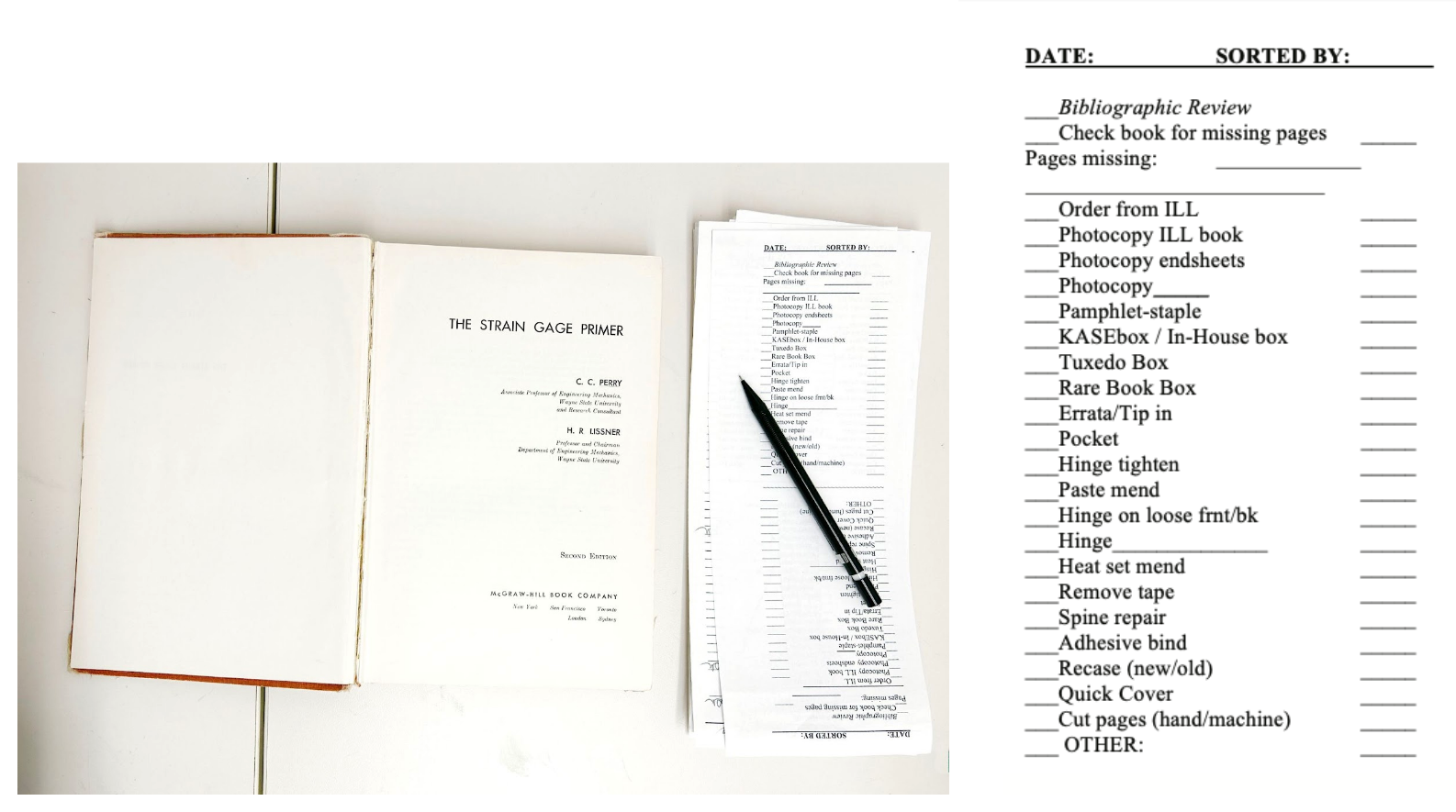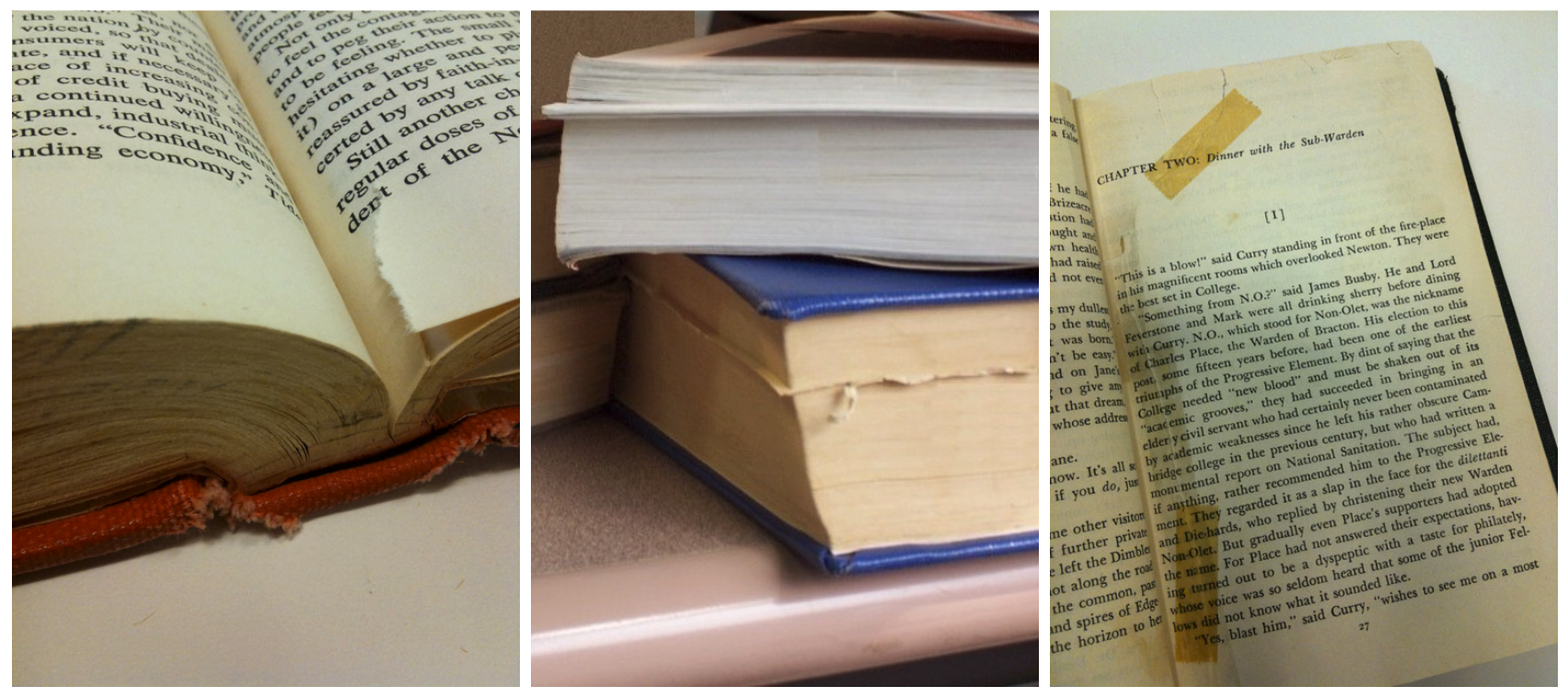
Deciphering Damage: The Delicate Balance of Book Repair

Now that we’ve shown you a couple of book repair treatments that we perform in Preservation, we want to offer an inside look at the philosophy and thought processes for deciding what repairs are most appropriate for damaged books in the general circulating collection. (You can find a brief description of our approach to Special Collections items in this blog post.)
Repairing a book is more than simply gluing (or taping - perish the thought!) it where it’s broken. You can “put it back together” in a lot of ways, but unless you consider how the book will move as someone opens and uses it, you can end up with a restrictive binding that actually creates more damage as someone fights to open it. Our treatments are designed to consider the physicality of how a book should work and move, so that the repair lasts for as long as possible into the future. I find myself channeling my inner Doc Brown in order to “think 4th dimensionally”.
Because we are a use-based lab, we rely on those on the front line of circulating materials to set aside damaged books as they are returned from patrons. Staff and student workers in the Access Services department are trained to identify books with damaged covers, torn spines, missing or torn pages, tape, water damage, or anything else that will make it hard for the book to be used the next time.
I will then triage the damaged books in a process I call The Sort, where I go through each book individually and make note of all elements that need to be addressed. Sometimes the reason it was sent to us - a missing call number or a beat up cover - is only one symptom of a deeper problem. A closer look inside can reveal a world of trouble.

The first question I ask is whether I can send the book to the commercial bindery in Greensboro. There the book will be rebound, but in a faster and less delicate way than we would handle it in-house. For a book to qualify to go to the bindery, it needs to have strong paper and no oddities that require closer attention.
For the items I choose to keep for in-house repair, I further dissect their issues so I can determine the most appropriate repair. My goal is to do only what the book needs and no more. It would be easy to call for a full rebind of every book that comes in, but that would overload the lab with unnecessary work and poorly utilize our time and resources. Equally, I don’t want to do too little work and have the book returned to us on its next use because we didn’t address its real problem. It’s a balancing act of resources and giving a book what it needs.
To make a decision, I am assessing the state of two elements - the cover and the text block (the unit of pages) - and the attachment between the two.
If a book requires a full rebind it is usually because its original cover is no longer fulfilling its duties of protecting the text block inside - it’s torn, beat up, bent or somehow compromised beyond usefulness. My next question is about how the text block was originally bound into a unit. Was it sewn together in folded sections or were individual sheets glued together at the spine?
Depending on the answer, I’ll select the following treatments:
- Recase - for sewn books; kept in house because the sewing needs to be reinforced or the paper is more fragile
- Adhesive bind - for glued books whose text blocks have split; kept in house because the paper is fragile or because the inner margin is tight and needs a watchful eye when trimming. You can read more about this procedure here.
- Quick cover - for heavily glued books whose text blocks are strong and have simply outlasted their covers; kept in house because the bindery would chop off the spine and lose inner margin when it is not necessary to do so

For other books, a full rebind is not required. If the text block and endsheets are intact, but pulling away from a cover that is still in good shape, I will select one of these approaches:
- Hinge tighten - we will insert glue into the joint area to reconstitute the connection between the text block and cover
- Spine repair - we will replace only the spine piece if it has torn away from the cover. You can see that full procedure here.

Often, the problem lies with specific pages within the text block. These repairs might be made in isolation or as part of a more intensive treatment:
- Loose pages - we can tip or hinge in loose pages
- Torn pages - we will mend the tears or photocopy and reattach the page
- Missing pages - we will order the same edition through Interlibrary Loan and photocopy the missing pages
- Taped pages - we will remove the tape and its adhesive, then treat it as a torn page

Finally, some items are not suited for or require repair, but are rather in need of an enclosure of some kind.
- Boxes - chosen for one of several reasons:
- Pages are brittle, making repair impossible - if a Collection Manager determines we still need to keep a brittle book, we will stabilize it in a box
- Items that have 2 or more parts - a box will hold all the pieces together
- Books with design elements as part of the binding that are cool but need protection
- Pockets - inserted onto the back inside cover of books that have a piece of accompanying material
- Pamphlet binders - we will staple single folio paperback items into a binder to protect them on the shelf

Sometimes the books are persnickety and don’t lend themselves to our standard repairs, which is when we have to get creative. (Frustrated first, if I’m honest, then creative!) It’s then that it’s really important to understand the functionality of a book, so that whatever solution we come up with supports the book as best as we can. And when there are physical limitations that we can’t overcome perfectly, I have to remember that we can only do the best we can with what we are given.
Our job is to use our expertise to serve the books that serve our students and researchers. We make decisions that allow us to do this as efficiently and responsibly as we can. And then we get down to the fun of repairing books; is there a better job than that??
If you have any questions or are interested in viewing Special Collections materials, please contact us at library_specialcollections@ncsu.edu or submit a request online. The Special Collections Research Center is open by appointment only. Appointments are available Monday–Friday, 9am–6pm and Saturday, 1pm–5pm. Requests for a Saturday appointment must be received no later than Tuesday of the same week.